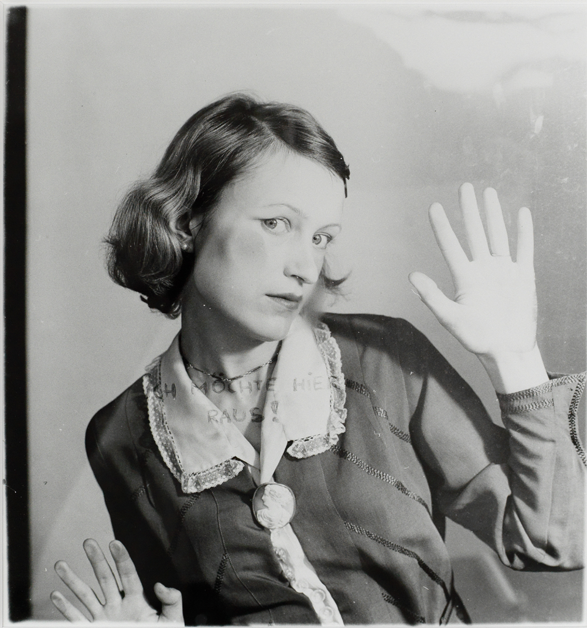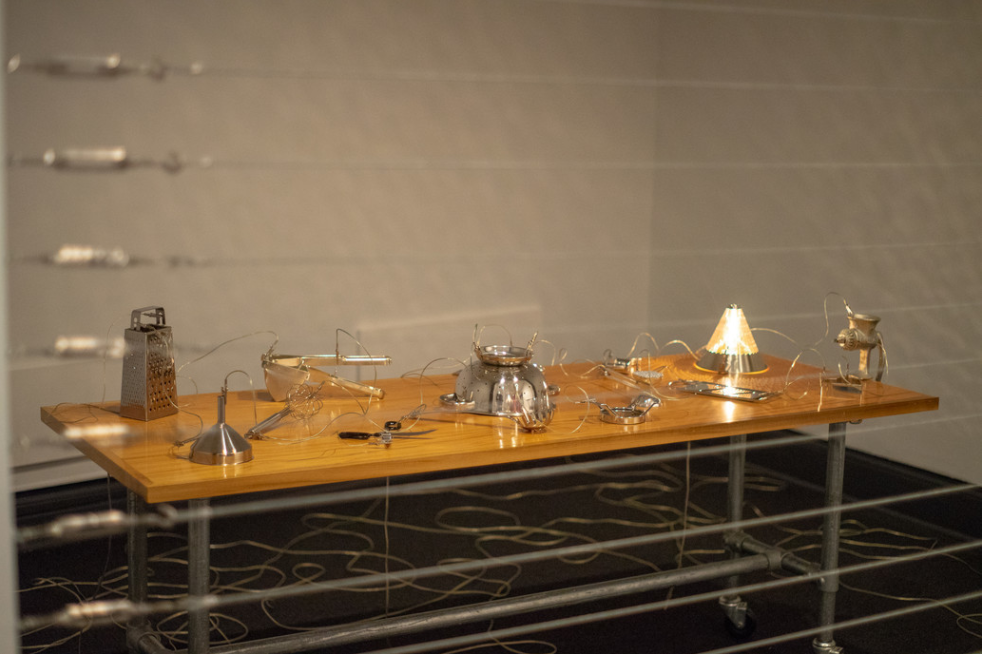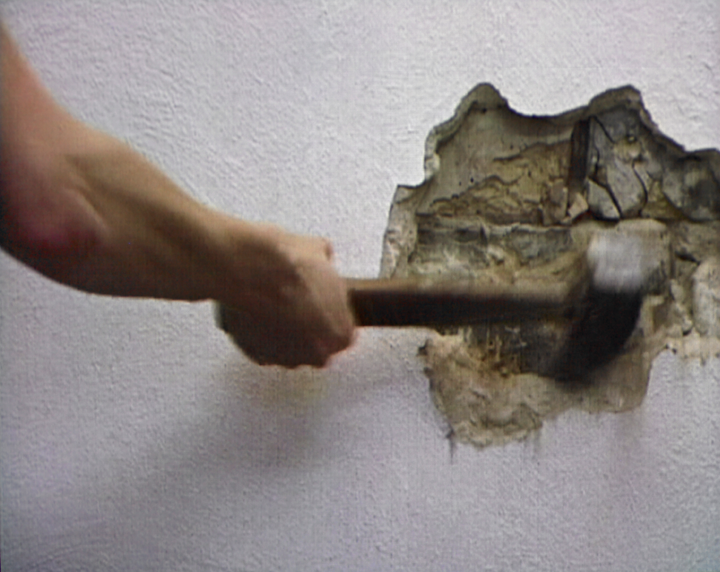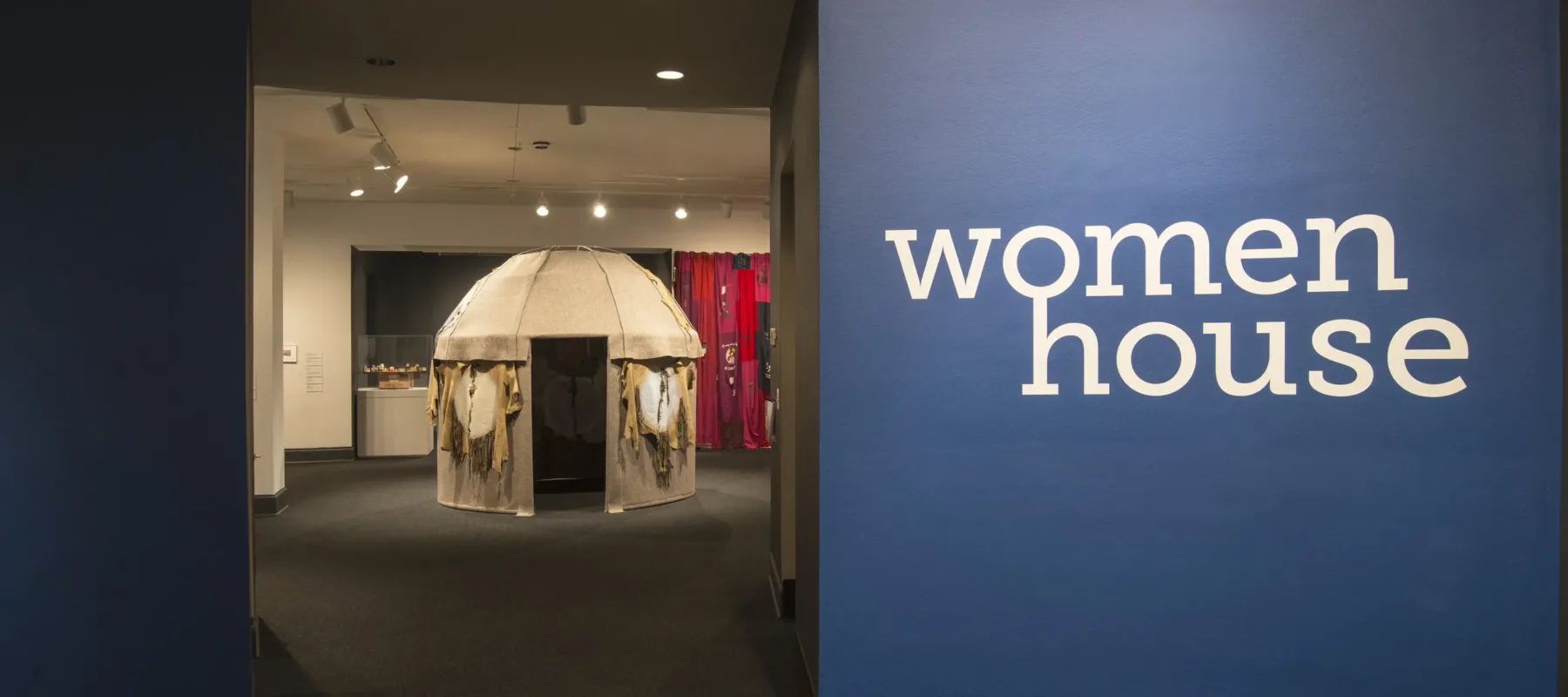Questions about a woman’s “place” resonate in our culture, and conventional ideas about the house as a feminine space persist. Global artists in Women House recast conventional ideas about the home through provocative photographs, videos, sculptures, and room-like installations. Birgit Jürgenssen, Mona Hatoum, and Monica Bonvicini explore the implicit and explicit oppression of domestic space and the desire to escape.
Birgit Jürgenssen, Ich möchte hier raus! (I Want To Get Out of Here!), 1976/2006
“Woman is so often the subject of art but only seldom and reluctantly is she allowed to speak for herself or to produce her own pictures,” wrote Birgit Jürgenssen (b. 1949, Vienna, Austria; d. 2003, Vienna, Austria). Jürgenssen and her feminist contemporaries had to write themselves into a male-dominated narrative of art history.

Jürgenssen portrayed herself as a stereotypical mid-20th-century housewife in the photograph Ich möchte hier raus! She appears silenced and trapped, with her face and hands pressed against glass. The message scrawled across her neck and lace collar, means “I want to get out of here.” The translucent glass alludes to a physical and metaphorical barrier between the housewife and the outside world.
Mona Hatoum, Home, 1999
Born in Beirut to a family of Palestinian exiles, Mona Hatoum (b. 1952, Beirut, Lebanon) “always had an ambiguous relationship with notions of home, family, and the nurturing that is expected.” Like other Palestinian refugees forced from their homes in 1948, Hatoum’s parents were never able to acquire Lebanese identification cards. When civil war broke out in her home country in 1975, Hatoum settled permanently in London.

Reframed in the context of exile, the word “home” can connote instability, lost identity, and even danger. Hatoum’s complex relationship with domesticity manifests itself in the installation Home. Ordinary kitchen appliances, including a colander, a whisk, and a cheese grater, sit atop a long wooden table. Connected by live electrical wires, the appliances are potentially deadly to the touch. Hatoum’s interpretation of the kitchen as a place of literal danger “shatters notions of the wholesomeness of the home environment.”
Monica Bonvicini, Hammering Out (an old argument), 1998
Multimedia artist Monica Bonvicini (b. 1965, Venice, Italy) views the built environment as a metaphorical representation of cultural and political constructs, particularly gendered power structures and social class divisions. Bonvicini says, “There is no such thing as a neutral architecture. Nothing is neutral from the moment you open a door and go in somewhere.”

Hammering Out (an old argument) is an 18-minute video in which a woman’s arm repeatedly strikes a wall with a mallet. The wall’s underlying brick foundation is gradually exposed, symbolizing the hidden ideologies within the architecture. While inherently violent, the act of destruction can also be empowering and liberating. Within the context of Women House, this video demonstrates a forceful reaction against the restrictive gender roles traditionally associated with the home.
Visit the museum and explore Women House, on view through May 28, 2018.

